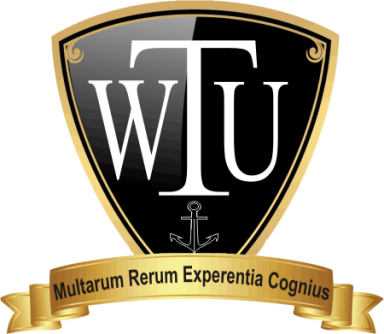World Trade Business
The World Trade University and The World Trade Co-operatives teach participants hands-on operations, with capacity to grow the businesses through trade. The WTC trade businesses are designed to support industry by increasing the efficiency of businesses by focusing on increasing capacity for the development of trade.
Guarantee Channels
Education Funding
Using Personal assets in the form of an insured guarantee, people can pay for their education instead of using direct funds, loans or Hex. $100M Aggregation of candidates are required.
$.5M Guarantee / 5 years/$.4M tuition
Sales
Using Underperforming or unencumbered Company assets, a 5 year forward order pipeline can be established. Guarantees are insured, Guarantor pays only the insurance premium.
$100M Guarantee/5 years/$125M new sales
Acquisition
Purchasing facility allowing a higher offer and requiring a guarantee on the asset to be purchased. Guarantees are insured, Guarantor pays only the insurance premium. Typically a 3 year sale where the seller gets 3 years at 10% PA then the purchase funds.
$100M Guarantee/ 5 years / cash less purchase
Guarantee / Surety / Pledge
These overlooked business tools enable properly setup co-operatives to work with their members and generate low risk funding for a variety of business activities. WTU has an extremely well tailored Co-operative structure to enable this structure.
A pledge or surety is found in the form of a bank guarantee.
A pledge is not a transfer of any cash or funds.
A pledge is not a formal investment
Using your assets your bank can issue a bank guarantee.
A bank guarantee is a surety or a contingent liability.
It does not appear on your balance sheet as an expense.
Stagnant Investments become high performing assets
Co-operative structures – have inherent low risk architecture. No one person can own the business, they are legislated under the department of justice (DOJ) and can elect as we do to accept frequent account audits by DOJ representatives.
Guarantees for these programs are issued in either the name of the World Trade University or one of our Australian co-operatives.
Our cooperatives are bound by Australian law (National Cooperatives Act 2013) and we report directly to the Department of Justice.




Business sectors
Aviation
As a trade focused university our intention is to build a successful logistical program for the transport of food and products quickly around the globe. We have a trading platform and other structures required to work with the $3M global co-operatives. Logistic blocks to trade lead back to Aviation. There is 1 public and 2 business sectors where we feel we can make a difference.
1. CPL to ATPL pilot training.
2. Flight school viability
3. Aircraft Manufacturer viability
Construction
Research has identified the opportunity to build houses along with commercial and civil construction while specialising on zero carbon or carbon neutral materials.
Our planning offers construction in modular, conventional tilt panel and multistory construction in vulnerable areas for cyclonic 5, earthquake H6, bushfire FZL, flood resistant and termite proofing.
We have plans and training available.
Energy
World Trade University believes that the best way to train participants is in an actual working environment that produces real power for the community and works as a trade option to bring Pacific Island Countries (PIC’s) out of poverty. World Trade University is keen to have working green energy that provides the power to produce hydrogen, which in turn is used to produce ammonia (an energy source that is safe to transport whether by ship, pipeline or even by rail/road.
Photovoltaics
The evolution of solar and the panels, technology and batteries offers the World Trade Business the opportunity to supply green energy to the Pacific Island Countries (PIC).
Wind
Wind Turbines are a good and reliable source of energy that solar does not supply when the sun is not out. This will also support the PIC’s with power but also the production of green hydrogen, green ammonia, green steel, green concrete and green ethanol.
Hydro
Hydro is the use of stored water as an energy source. Pumped hydro is where the water is stored in an upper dam and as it flows down a tube the speed of the water turns a turbine to produce power.
Geothermal
This form of energy is one of the oldest sources and has been identified as the best form of renewable energy. It is created by digging a small hole in the earth and pumping water down the hole, which then heats up and turns into steam, which then rises to the top and drives a turbine.
The benefits are that it is not dependent upon the sun or wind to generate power, or require batteries or Dams to store the energy.
With the “Ring of Fire” centered in the Pacific there is no better place to establish a power generating green energy without harming the environment in any capacity.
Production
Hydrogen
Hydrogen is the most abundant element in the universe.
Hydrogen is the most powerful energy tool being used to combat the carbon emissions. There is huge interest in supporting a fully operational product that can be used as an energy source locally or exported around the globe. We have had interest from the automotive industry, the maritime industry, the manufacturing industry, the chemical industry and demand for the next ten years will be exceeding supply.
Hydrogen was valued at $153 billion in 2022 but expected to rise by a compound annual growth rate (CAGR) of 9.2%.
Ammonia
Ammonia is simply hydrogen with the added element nitrogen. Ammonia has many uses including 80% of all ammonia used as fertiliser, with the remaining 20% shared with fuel, and at least 1000 other products.
This market in 2022 was estimated at $75.7 billion US and by 2028 is expected to rise in excess of $108 billion.
Recently the shipping industry signed an agreement to move away from diesel to ammonia.
Steel
Green steel market was estimated at $200 million in 2022 and is expected to reach $364.5 billion by 2032. Growing at CAGR of 113.% from 2023 to 2032.
Green steel requires a lot of energy, and we will be generating that through hydrogen.
The world expectations for green steel is expected to grow exponentially over the next 25 years.
Our objective is to establish one of the largest green steel plants in the Pacific.
Steel manufacturing produces more CO2 than any other heavy industry, comprising around 8% of total global emissions. Our intention is to move steel production away from coal-fired furnaces to ones powered by electricity or hydrogen. By producing green steel, we will be scaling up to meet zero emissions.
Concrete
Green Concrete Market was valued at US$ 30.68 Bn. in 2022 and is forecasted to be valued at US $ 71.29 Bn. in 2029. The Green Concrete Market size is estimated to grow at a CAGR of 12.8% over the forecast period.
The opportunity to create this market in the Pacific region with almost half of the worlds population in our region is just too good to pass up.
Methanol
Green methanol was valued at 225.1 million USD in 2022 & is expected to grow at a CAGR of 53.8 % from 2023-2030. In 2028 the market is expected to be $387 billion.
This is mainly due to governments globally wishing to promote cleaner renewable energy and increasing consumption of renewable fuel.
Expanding Co-operative Trade Markets
Are you interested in an international marketing program for your products?
Information required to assess your application by WTU
- What products do you have ?
- What Volume / Quantities are available ?
- Do the products Meet International Standards ?
- Do you have access to a research Facility to upgrade your standards ?
What are your immediate needs ?
- Capital
- Equipment
- Storage
- Transport
- Supply Chain
- Education
- Certification
- IT resources
- Value Adding Opportunities
- Land
- Water
- Fertiliser
